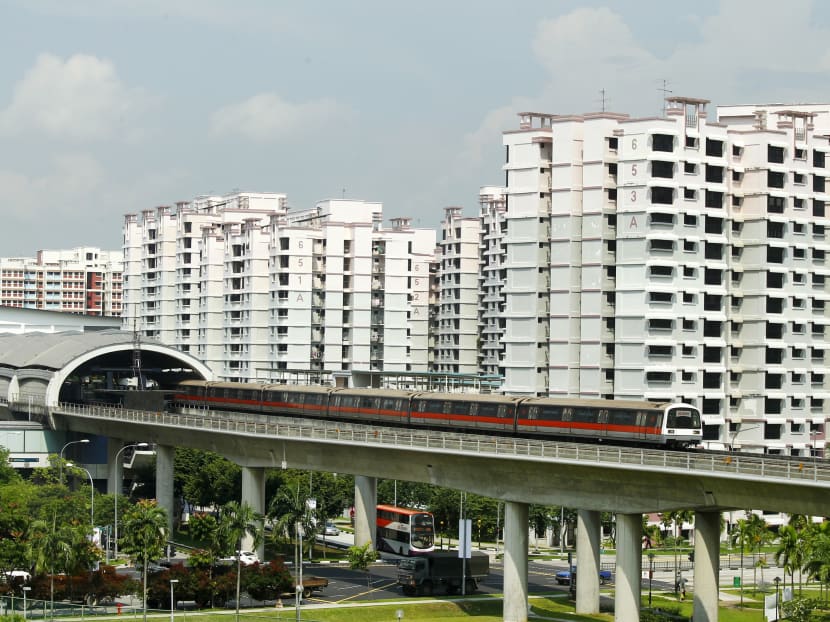Go local for future MRT projects, urges MP Ang Wei Neng
SINGAPORE — With the bulk of Singapore’s rail systems and infrastructure built and supplied by foreign expertise, Member of Parliament (MP) for Jurong GRC Ang Wei Neng has called on the authorities to give home-grown firms a bigger role in building and shaping the nation’s rail lines in the future.
SINGAPORE — With the bulk of Singapore’s rail systems and infrastructure built and supplied by foreign expertise, Member of Parliament (MP) for Jurong GRC Ang Wei Neng has called on the authorities to give home-grown firms a bigger role in building and shaping the nation’s rail lines in the future.
While many of the foreign players engaged to work on Singapore’s MRT system grew with the support of their governments, Singapore may not be able to help local firms expand on such a scale overnight, Mr Ang told Parliament on Wednesday (Feb 28).
However, the Government could make it a requirement for foreign firms involved in rail projects here to form joint ventures with Singapore companies, he suggested.
“This will be advantageous, as working with these multinational companies will allow us to learn their expertise, their technologies and their processes,” said Mr Ang during the Budget debate in Parliament.
He noted that foreign companies such as France’s Thales and Alstom, and Siemens from Germany, have been the primary providers of rail components and systems here, including the MRT network’s signalling system and trains.
Much of the train tunneling work is also done by foreign contractors such as Japanese firm Nishimatsu Construction and China’s Shanghai Tunnel Engineering. Local construction firms are usually the sub-contractors.
“From the inception of our MRT system until today — 30 years have passed — we have to rely on these foreign companies to replenish our rolling stock, to upgrade our train and ... signalling system. In fact, the current signalling system in many MRT lines looks like a black box to us,” said Mr Ang.
In November last year, Thales, which is supplying the new signalling system on the North-South and East-West Lines, came under scrutiny after the high-profile collision of two trains at Joo Koon MRT Station. The collision was caused by the disabling of a protective feature on one of the trains after it passed a trackside device that was not modified for compatibility with the new signalling system.
The company was forced to apologise after the incident.
Mr Ang said he is hopeful that local firms can play a significant role in “building, supplying and upgrading the Singapore MRT system — (one) that we can be proud of” for future MRT lines that are scheduled to be completed by 2030. Singapore’s rail network will double to 360km by that time, and among the upcoming projects is the Cross Island MRT Line, which is due to be completed in about 12 years’ time.
On Wednesday, Mr Ang, who is also chief executive officer of ComfortDelGro Taxi, also waded into the issue of different regulatory standards governing taxi and ride-hailing operators in Singapore, as he called on the Government to level the playing field for all involved.
“Given the onslaught of cheap money under the guise of ride-hailing technology, all the taxi companies... have had no choice but to form alliances with the two dominant ride-hailing companies (Grab and Uber)”, said Mr Ang.
This has forced taxi companies into a “tight spot” even as commuters now have more choices when it comes to hailing cabs, he added.
Last year, Grab joined hands with five taxi operators — Trans-Cab, SMRT Taxis, Prime Taxi, Premier Taxis, and HDT Singapore Taxi — to launch the fixed-fare booking service JustGrab. ComfortDelGro, Singapore’s largest taxi operator, was not part of the alliance. In January this year, it teamed up with Uber to start a similar booking service called UberFlash.
Mr Ang cited the Land Transport Authority’s (LTA) Quality of Service (QOS) framework as an example of how taxi operators were “over-regulated”. He added that this was in contrast to the new “under-regulated” entrants which entered the market in 2013.
For instance, one criterion under the LTA framework states that at least 92 per cent of commuters’ taxi requests made by phone must be matched to taxis to demonstrate “good quality of service”. However, a good share of taxis now receive bookings via the ride-hailing apps, which means fewer taxis are accepting requests through taxi firms’ apps or call centres, which is what the LTA measures.
He said: “This means that taxi companies are more susceptible to failing QOS (standards), because of the effort to provide more choices to the commuters. Ideally, the LTA needs to consider taxi-booking data from both the taxi companies and third-party ride hailing companies that despatch taxis collectively.”
Mr Ang added that regulators need to rethink rules governing “multimodal industries”, such as a ride-hailing company that also offers other services including e-payments. “It’s important to strike a balance between over-regulation which would stifle creativity, or under-regulation which might create unfair competition to existing players,” he said.









